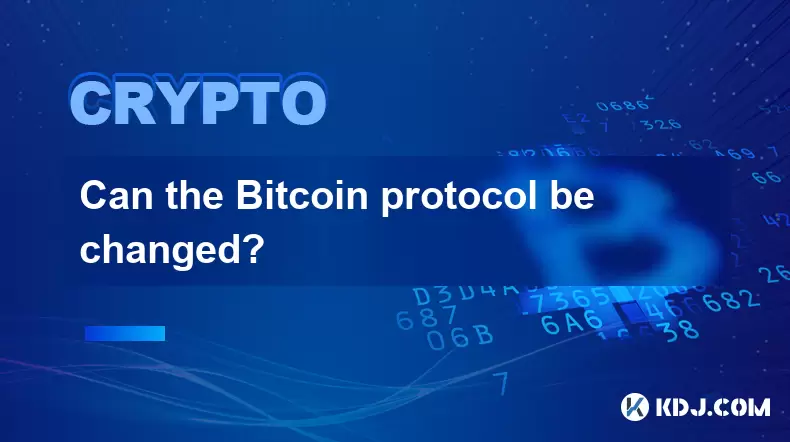-
 bitcoin
bitcoin $123963.239194 USD
1.37% -
 ethereum
ethereum $4529.082464 USD
1.07% -
 xrp
xrp $2.983640 USD
0.71% -
 tether
tether $1.000287 USD
0.02% -
 bnb
bnb $1179.874393 USD
2.99% -
 solana
solana $230.633678 USD
1.55% -
 usd-coin
usd-coin $0.999835 USD
0.03% -
 dogecoin
dogecoin $0.254240 USD
1.34% -
 tron
tron $0.341176 USD
0.15% -
 cardano
cardano $0.842285 USD
0.52% -
 hyperliquid
hyperliquid $48.537896 USD
-0.86% -
 chainlink
chainlink $21.863092 USD
-0.84% -
 ethena-usde
ethena-usde $0.999743 USD
-0.07% -
 sui
sui $3.579561 USD
-0.18% -
 stellar
stellar $0.403418 USD
2.67%
What is the minimum amount of Bitcoin to buy?
Bitcoin transactions have no inherently defined minimum amount, but wallets, exchanges, and transaction fees may impose thresholds or limitations, ranging from a few satoshis to a few dollars or more.
Sep 27, 2024 at 05:06 pm

- Understanding Bitcoin Transactions
Bitcoin transactions involve sending or receiving specific amounts of cryptocurrency from one digital wallet to another. Unlike traditional currency transactions, Bitcoin transactions occur on a decentralized network, meaning they are not subject to the same minimum transaction amounts as bank transfers or credit card payments.
- Nominal Minimum Transaction Amount
From a technical standpoint, the Bitcoin network itself does not define a minimum transaction amount. However, certain limitations may apply based on factors such as wallet software, transaction fees, and exchange policies.
- Wallet Software Considerations
Most Bitcoin wallets, including popular options like Electrum, Exodus, and Ledger Live, do not impose a minimum transaction limit. However, some hardware wallets or custodial exchanges may have specific thresholds for outgoing transactions. These minimums are usually very small, ranging from a few satoshis to a few dollars worth of Bitcoin.
- Impact of Transaction Fees
When sending Bitcoin, a small fee is typically required to incentivize miners to process the transaction. The fee is calculated based on the size and complexity of the transaction. However, it is important to note that this fee is not a minimum transaction amount. Even if you only send a single satoshi (the smallest unit of Bitcoin), you can still initiate a transaction by paying an adequate fee.
- Exchange Minimum Withdrawals
When withdrawing Bitcoin from a cryptocurrency exchange, there may be a minimum withdrawal amount set by the exchange. This minimum is typically higher than the minimums imposed by wallets and transaction fees. The exact amount varies between exchanges, but it can range from a few dollars to hundreds of dollars.
- Practical Considerations
While there is no technical minimum transaction amount for Bitcoin, it is advisable to consider the following practical considerations:
- Exchange Rates: Fluctuating Bitcoin exchange rates can make it inefficient to transfer very small amounts of BTC.
- Lost Transactions: Transactions with insufficient fees may get lost or delayed, potentially resulting in the loss of funds.
- Privacy: Sending very small amounts of Bitcoin can reduce privacy as it creates a trail of micro-transactions that can be traced.
- Summary
In conclusion, the minimum amount of Bitcoin to buy is generally determined by wallet software considerations, transaction fees, exchange withdrawal limits, and practical considerations. While the technical minimum is extremely small (one satoshi), it is advisable to consider the factors outlined above when making Bitcoin transactions.
Disclaimer:info@kdj.com
The information provided is not trading advice. kdj.com does not assume any responsibility for any investments made based on the information provided in this article. Cryptocurrencies are highly volatile and it is highly recommended that you invest with caution after thorough research!
If you believe that the content used on this website infringes your copyright, please contact us immediately (info@kdj.com) and we will delete it promptly.
- BlockDAG, DOGE, HYPE Sponsorship: Crypto Trends Shaping 2025
- 2025-10-01 00:25:13
- Deutsche Börse and Circle: A StableCoin Adoption Powerhouse in Europe
- 2025-10-01 00:25:13
- BlockDAG's Presale Buzz: Is It the Crypto to Watch in October 2025?
- 2025-10-01 00:30:13
- Bitcoin, Crypto, and IQ: When Genius Meets Digital Gold?
- 2025-10-01 00:30:13
- Stablecoins, American Innovation, and Wallet Tokens: The Next Frontier
- 2025-10-01 00:35:12
- NBU, Coins, and Crypto in Ukraine: A New Yorker's Take
- 2025-10-01 00:45:14
Related knowledge

Why is Bitcoin considered a revolutionary technology?
Aug 12,2025 at 08:29pm
Decentralization and the Elimination of Central AuthoritiesThe core innovation behind Bitcoin lies in its decentralized architecture, which fundamenta...

Why is Bitcoin considered a revolutionary technology?
Aug 10,2025 at 07:42pm
Decentralized Architecture and Trustless TransactionsBitcoin is considered revolutionary because it introduced a decentralized architecture that opera...

What are the key features of Bitcoin?
Aug 10,2025 at 02:50am
Decentralization and Peer-to-Peer NetworkOne of the most defining characteristics of Bitcoin is its decentralized nature. Unlike traditional financial...

Can the Bitcoin protocol be changed?
Aug 07,2025 at 01:16pm
Understanding the Bitcoin ProtocolThe Bitcoin protocol is the foundational set of rules that govern how the Bitcoin network operates. It defines every...

Can the Bitcoin protocol be changed?
Aug 11,2025 at 01:01am
Understanding the Bitcoin Protocol StructureThe Bitcoin protocol is the foundational set of rules that govern how the Bitcoin network operates. These ...

What happens to Bitcoin transactions once they are confirmed?
Aug 09,2025 at 05:22am
Understanding Bitcoin Transaction ConfirmationWhen a Bitcoin transaction is initiated, it is broadcast to the network and placed in a pool of unconfir...

Why is Bitcoin considered a revolutionary technology?
Aug 12,2025 at 08:29pm
Decentralization and the Elimination of Central AuthoritiesThe core innovation behind Bitcoin lies in its decentralized architecture, which fundamenta...

Why is Bitcoin considered a revolutionary technology?
Aug 10,2025 at 07:42pm
Decentralized Architecture and Trustless TransactionsBitcoin is considered revolutionary because it introduced a decentralized architecture that opera...

What are the key features of Bitcoin?
Aug 10,2025 at 02:50am
Decentralization and Peer-to-Peer NetworkOne of the most defining characteristics of Bitcoin is its decentralized nature. Unlike traditional financial...

Can the Bitcoin protocol be changed?
Aug 07,2025 at 01:16pm
Understanding the Bitcoin ProtocolThe Bitcoin protocol is the foundational set of rules that govern how the Bitcoin network operates. It defines every...

Can the Bitcoin protocol be changed?
Aug 11,2025 at 01:01am
Understanding the Bitcoin Protocol StructureThe Bitcoin protocol is the foundational set of rules that govern how the Bitcoin network operates. These ...

What happens to Bitcoin transactions once they are confirmed?
Aug 09,2025 at 05:22am
Understanding Bitcoin Transaction ConfirmationWhen a Bitcoin transaction is initiated, it is broadcast to the network and placed in a pool of unconfir...
See all articles










































































